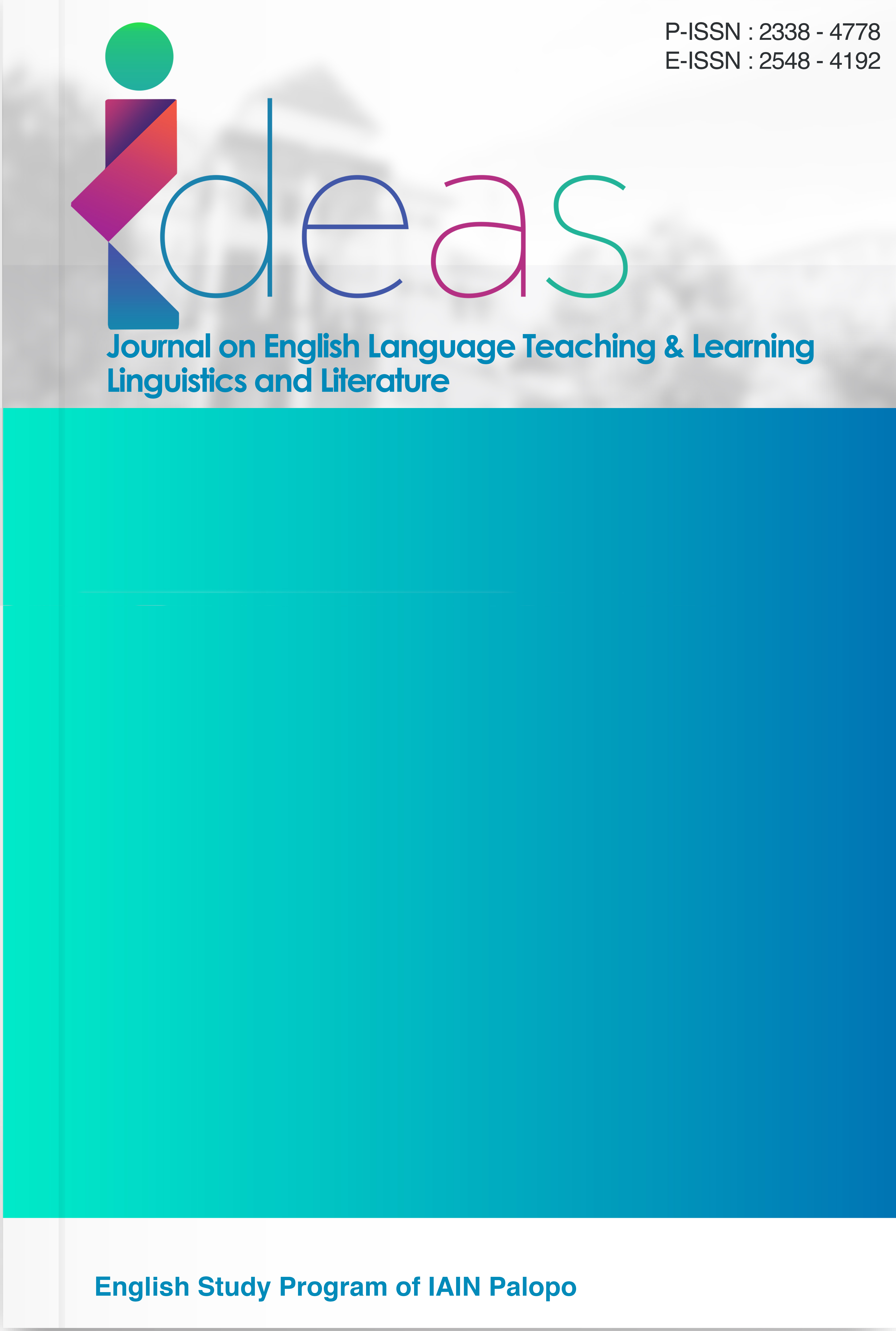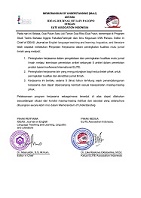EFL Students’ Metacognitive Strategies in Learning Speaking
DOI:
https://doi.org/10.24256/ideas.v13i2.5898Keywords:
Metacognitive Strategies, SpeakingAbstract
This research aims to identify the metacognitive strategies students apply in learning to speak. These strategies include planning, monitoring, information management, debugging, and evaluation. The study uses a quantitative approach and distributed questionnaires via Google Forms to 157 respondents. However, only 110 English education students from four different semesters (two, four, six, and eight) at Muhammadiyah University of Kendari were willing to participate. The results show that 41% of students sometimes planning their speaking lessons by reading the instructions carefully before starting the task. Additionally, 39% of students often monitor their comprehension to improve their speaking skills, such as checking whether the presentation objectives are achieved and considering alternative ways to solve speaking problems. For the Information Management strategy, 40% of students often try to translate their talks into their own words for better understanding. Furthermore, 43% of students often follow the Debugging strategy, which involves stopping and repeating when unsure in speaking. In terms of evaluation, 43% of students sometimes evaluate their speaking learning by assessing their performance after speaking comprehension tests and identifying areas for improvement.
References
Basalama, N., Bay, I. W., & Abubakar, A. (2020). Student’s learning strategies in English speaking class. Jambura Journal of English Teaching and Literature, 1(1), 27-39.
Brown, H, D. (1990). Principles of Language Learning and Teaching. San Francisco: Pearson.
Dangin, D., & Hartati, E. (2022). STUDENTS’ METACOGNITIVE STRATEGIES AWARENESS AND SPEAKING ABILITY: A CORRELATIONAL STUDY. https://journal.unj.ac.id/unj/index.php/ijlecr/article/view/28547
Donndelinger, Stephen, J. (2005). Integrating Comprehension and Metacognitive Reading Strategies. In Susan, E, I., Cathy, C, B., Kathryn, L. B., & Kathryn, K, W. (Eds.). Metacognition in Literacy Learning: Theory, Assessment, Instruction, and Professional Development. London: LEA Publishers.
Flavell, J. H. (1979). Metacognition and cognitive monitoring: A new area of cognitive–developmental inquiry. American Psychologist, 34(10), 906-911.
Harmer, J., 2007. The practice of English language teaching. Harlow: Pearson Longman.
Lapele, D. A. (2020). Metacognitive awareness inventory (MAI) students in online learning.
Luoma, S. (2004). Assessing Speaking. Cambridge University Press.
Livingston, J. A. (1997). Metacognition: an overview. http://www.gse.buffalo.edu/fas/shuell/cep564/Metacog.htm
O'Malley, J. M., Chamot, A. U., Stewner-Manzanares, G., Kupper, L., and Russo, R. P. (1985). 'Learning strategies used by beginning and intermediate ESL students' (Language Learning, 35, 21-46.)
O'Malley, J. M., & Chamot, A. U. (1990). Learning Strategies in Second Language Acquisition. Cambridge University Press.
Rubin, J. (1975). What the "good language learner" can teach us. TESOL Quarterly, 9(1), 41-51.
Schraw, Gregory, and Dennison, R, Sperling. (1994). Assessing metacognitive Schleifer, F. L., Lidya, and Dull, B. Richard. (2009). Metacognition and performance in the accounting classroom. Issues in Accounting Education. Vol. 3, No. 3, pp. 339-367.
Schraw, G. & Moshman, D. (1995). Metacognitive Theories. Educational Psychology Review,
Zhang, L., & Qin, Z. (2020). Metacognitive Strategy Training and EFL Speaking Proficiency: A Study of Chinese Learners. Journal of Language Teaching and Research, 11(2), 205-215.
Zeng, Y., & Goh, C. C. M. (2018). A Study of Metacognitive Awareness of EFL Listeners in China. Asian EFL Journal, 20(3), 72-9
Downloads
Published
Issue
Section
Citation Check
License
Copyright (c) 2025 fitrianingsih, Rahmat Nasrullah, Faridawati

This work is licensed under a Creative Commons Attribution-ShareAlike 4.0 International License.
Authors retain copyright and grant the journal right of first publication with the work simultaneously licensed under an Attribution-ShareAlike 4.0 International (CC BY-SA 4.0) that allows others to share the work with an acknowledgement of the work's authorship and initial publication in this journal.
Authors are able to enter into separate, additional contractual arrangements for the non-exclusive distribution of the journal's published version of the work (e.g., post it to an institutional repository or publish it in a book), with an acknowledgement of its initial publication in this journal.
Authors are permitted and encouraged to post their work online (e.g., in institutional repositories or on their website) prior to and during the submission process, as it can lead to productive exchanges, as well as earlier and greater citation of published work (See the Effect of Open Access)




